Under the forest canopy, tucked into a quiet nook, there’s a neighborhood of log cabins.
But standing just 4 feet tall, they’re not home to humans. Instead, the residents bust through the bark: mushrooms.
Some stand straight and rigid; others curve toward the sky. Their clusters look like umbrellas on a crowded beach.
When the time is right, Mike Somich will harvest the caps, take a 60-second gator ride, and make a fungi delivery to our Taproom kitchen in Mills River, North Carolina.
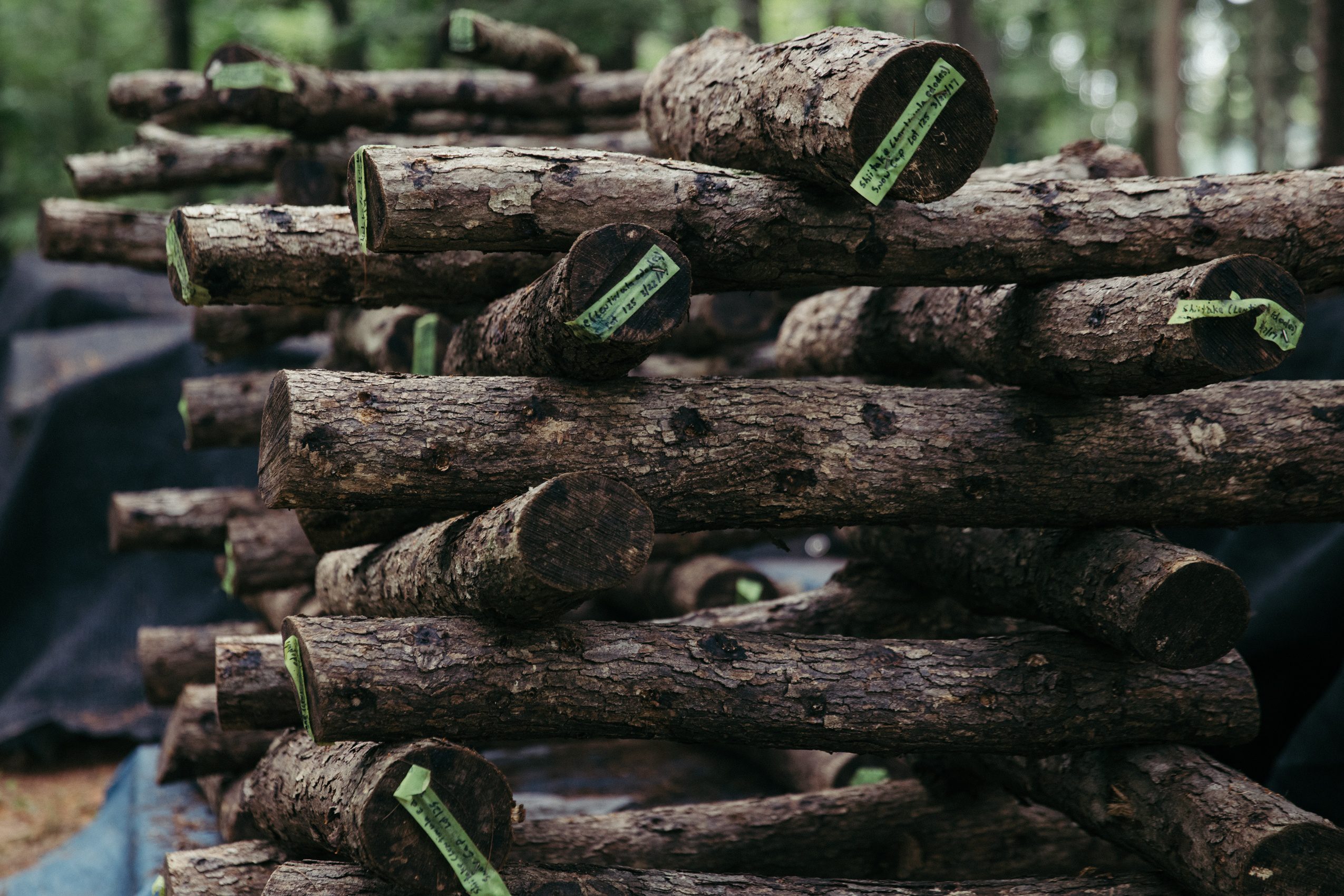
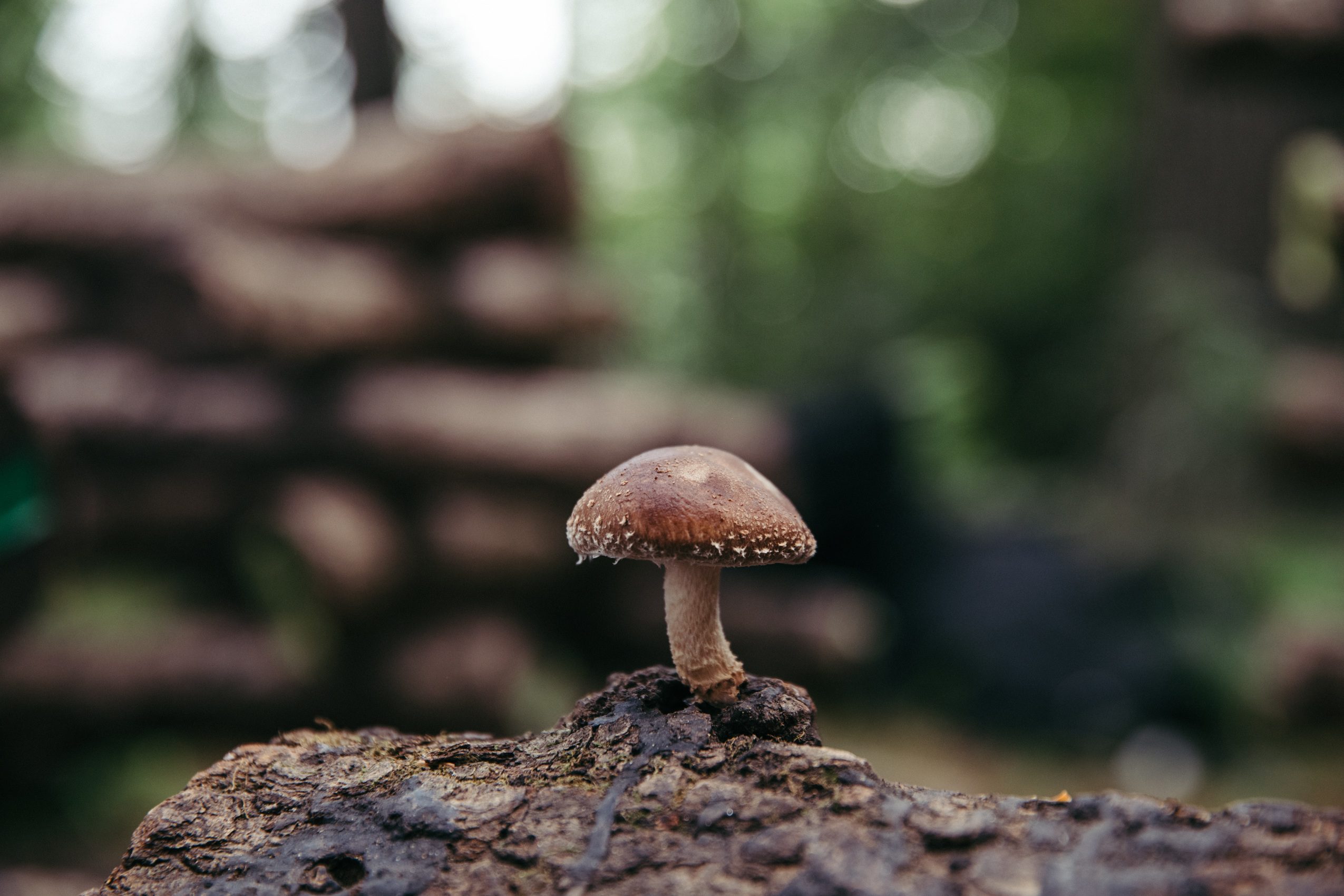
A groundskeeper at our Mills River brewery, Mike started growing mushrooms on-site in 2016. (Like the rest of our Estate gardens, the mushrooms are certified organic by Oregon Tilth.) And for him, this project was decades in the making.
Mike, a.k.a. Mushroom Mike, grew up in Ohio where his friends hunted wild Morel mushrooms, a coveted and expensive variety. Mike tagged along, and his intrigue grew. Soon he had a stack of books and enrolled in classes.
Mike briefly headed west, living in Utah where he rebuilt hiking trails with the National Park Service. But he was “missing the lushness of the East,” he says, and in 2005 settled in North Carolina.
“As soon as I moved here and saw the moisture and the humidity,” Mike says, “I knew it would be pretty ideal to start growing mushrooms.”
He tried it on a small scale at home, and in time, Mike began teaching classes through local landscaping companies and garden centers.
“It’s like gardening,” he says, “but you’re doing it on wood instead of in the soil.”

And sourcing wood is often the main pain point. The logs need to be freshly cut, still alive.
“[That’s] when the sap starts running back up into the tree,” Mike says. “It just adds that extra sugar that the mycelium can feed off of to get established.”
Think of mycelium as the root system from which mushrooms grow. Flip over a log in the forest and look for sprawling white patches—that’s mycelium.
“If you use a dead tree,” Mike explains, “the nutrients aren’t in there for the mushrooms to grow.”
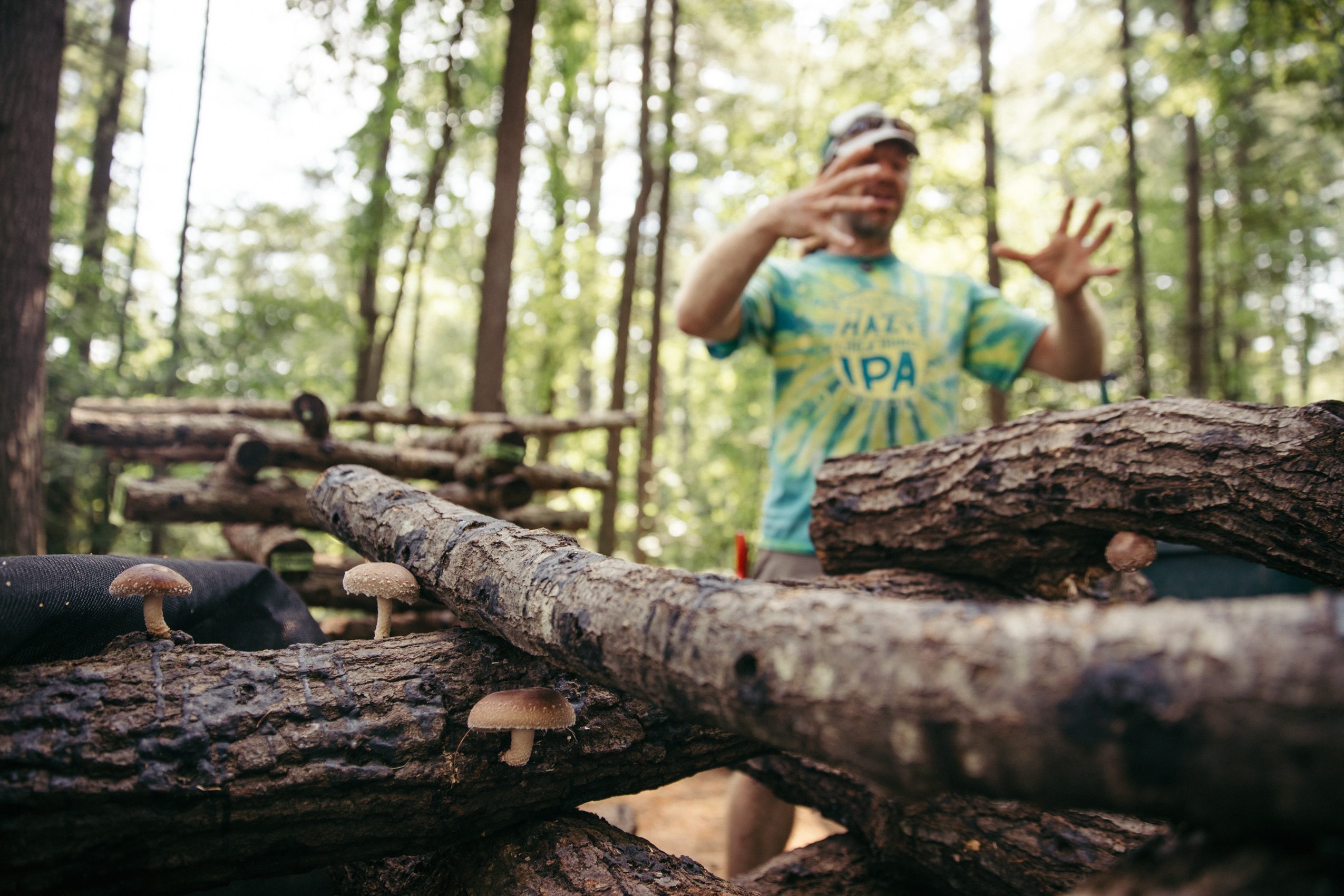
When Mike joined the brewery in 2015, he looked around at our 200 wooded acres—a log jackpot—and wasted no time pitching his idea: growing mushrooms for the Taproom.
By that next spring—the ideal time of year to start mushroom logs—Mike’s vision was in motion.
He met with Jessie Massie, our executive chef in Mills River, to decide on the best varieties for our ever-changing menu. They landed on shiitake mushrooms and oyster mushrooms.
“The shiitakes grow really fast; we can get those within a season,” Jessie says. “Oysters, some of those take a couple of years to cultivate.”
Shiitakes are a dense, meaty mushroom with a distinct flavor.
“Oysters are really delicate,” Jessie says. “They’re not as forward in the flavor. You can just see by looking at them: they just crumble in your hand.”
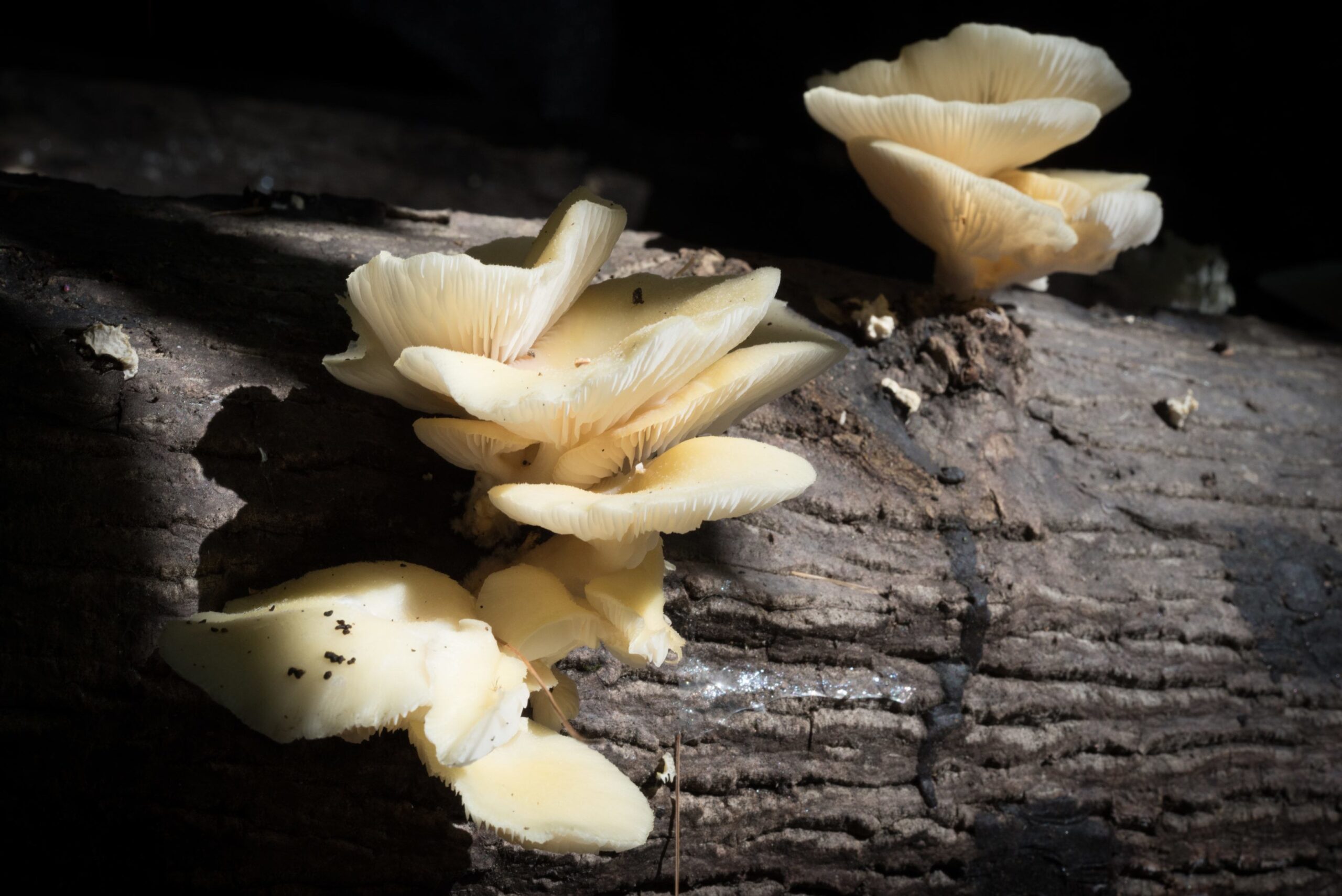
Mike gathered the materials, tools and teammates for the first shiitake and oyster inoculation—like planting seeds in your garden beds.
For inoculation, Mike and his teammates source trees with roughly 6-inch diameters from our brewery property. Cut into 4-foot lengths, the logs are easy to move by hand.
Using a special drill bit, they bore holes 6 inches apart down the length of a log. They rotate the log 2 inches and drill again, except they shift the holes by 3 inches. They repeat this until, eventually, there’s a diamond pattern of holes. This layout enables the mycelium to take over the entire log.
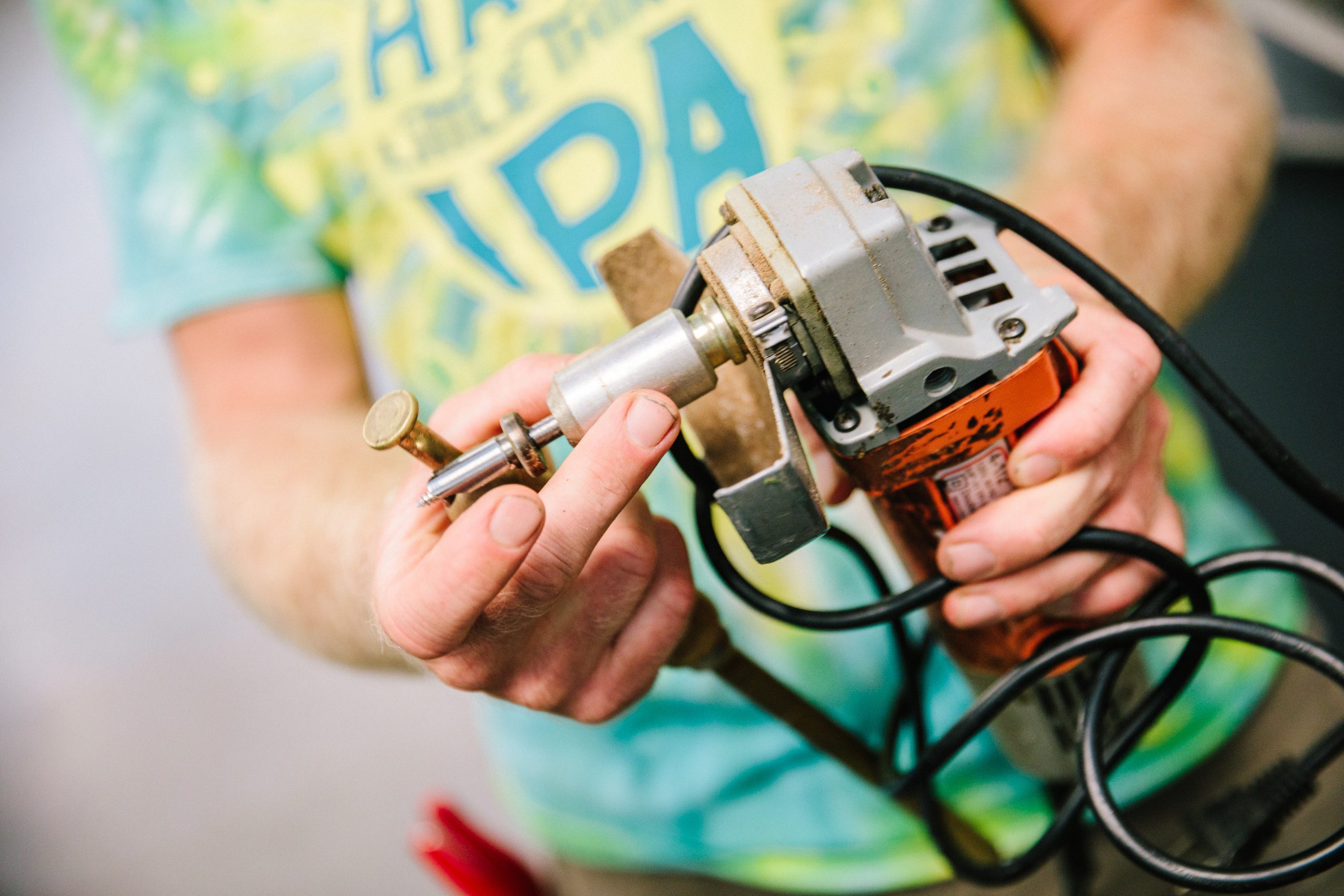
Into the holes they jam spawn, the “starter” that’s specific to each mushroom variety. Spawn combines a sterilized substrate, like wood shavings, with the early growth of mycelium.
Finally, the inoculation team seals the holes with cheese wax. This plug keeps the mycelium from drying out and blocks troublesome bugs.
They stack the finished pieces in log cabin formations. (The spacing allows easy maneuvering through and around the logs.)
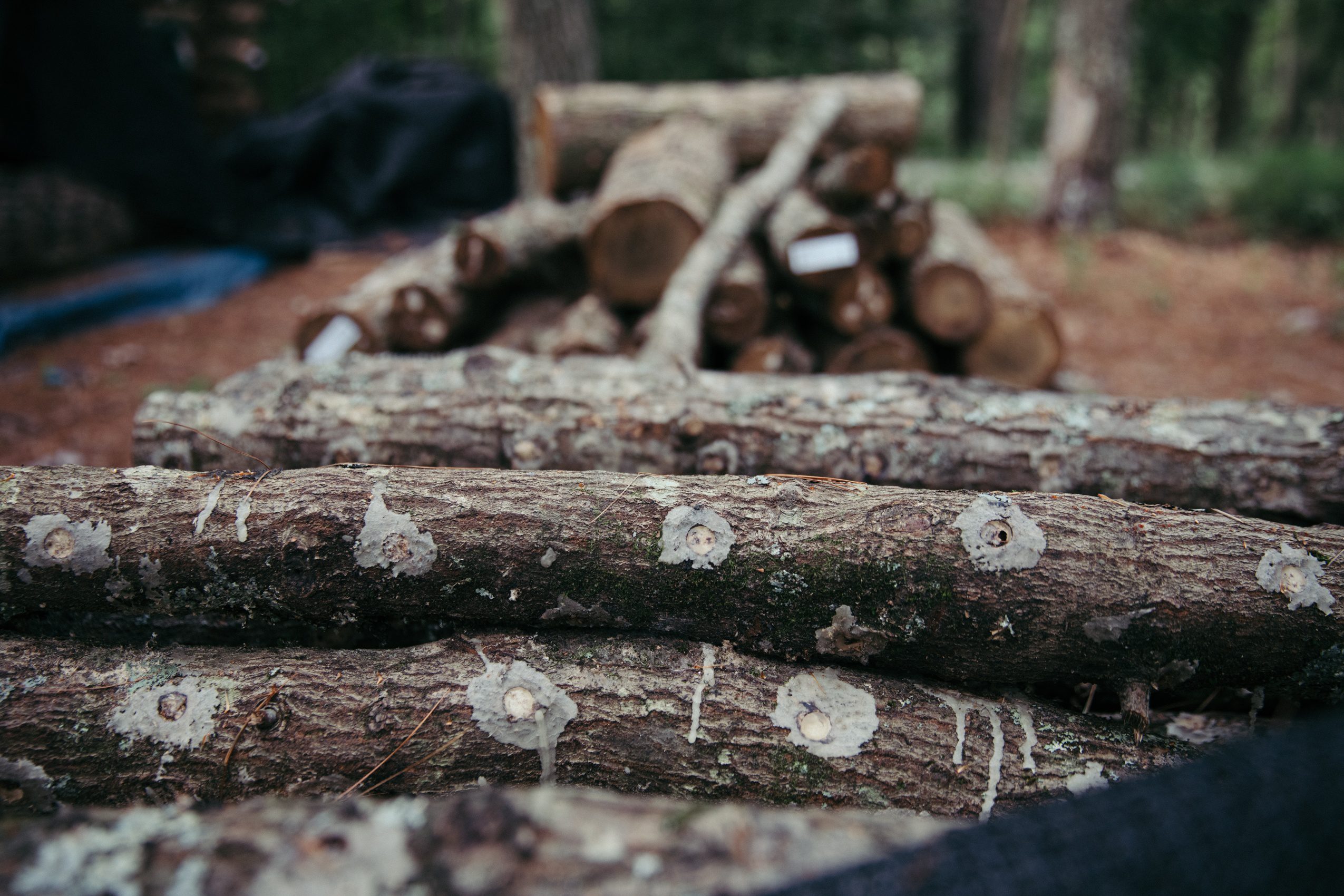
From there, you wait. You wait a long time.
It can take anywhere from 6-12 months for the first mushrooms to emerge. Along the way, moisture is key.
“You can either wait on Mother Nature for rain,” Mike says, or you can encourage mushrooms to fruit by soaking the logs in water for 24 hours, then re-stacking them.
And there are many other variables at play when growing mushrooms at home: type of tree, log diameter, temperature, shade and more.
Mike’s first-ever harvest was 10-11 pounds of mushrooms from two stacks of logs. Today, there are about two dozen log cabins totaling nearly 300 logs. The harvests are a little bigger and more frequent.
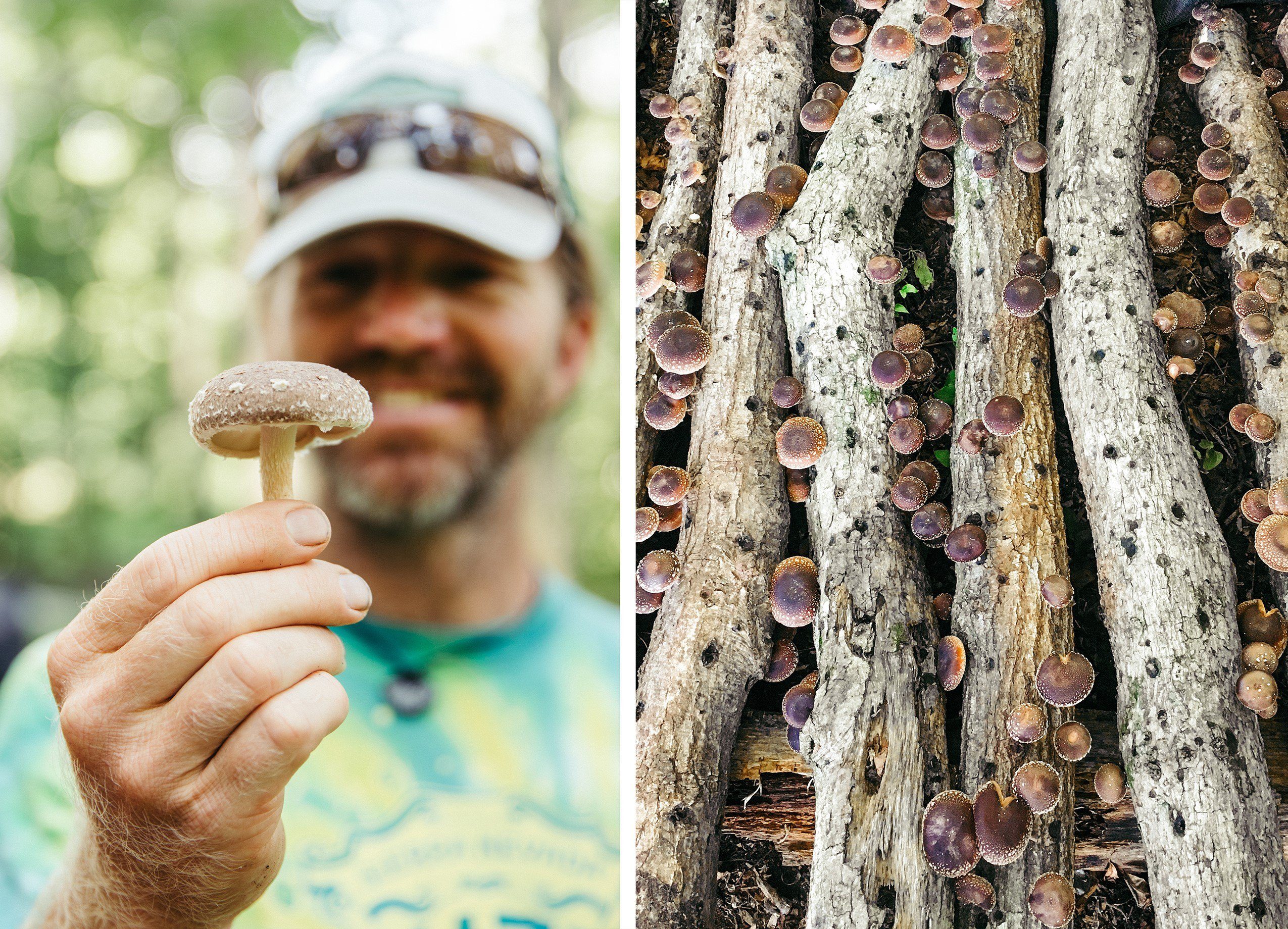
In the Taproom, chef Jessie uses the Estate mushrooms toward entrées like flatbread pizza or a French-inspired dish our sous chef Brad Canipelli created: a leek and potato soup topped with sautéed mushrooms, shallots, garlic, thyme and a splash of sherry vinegar.
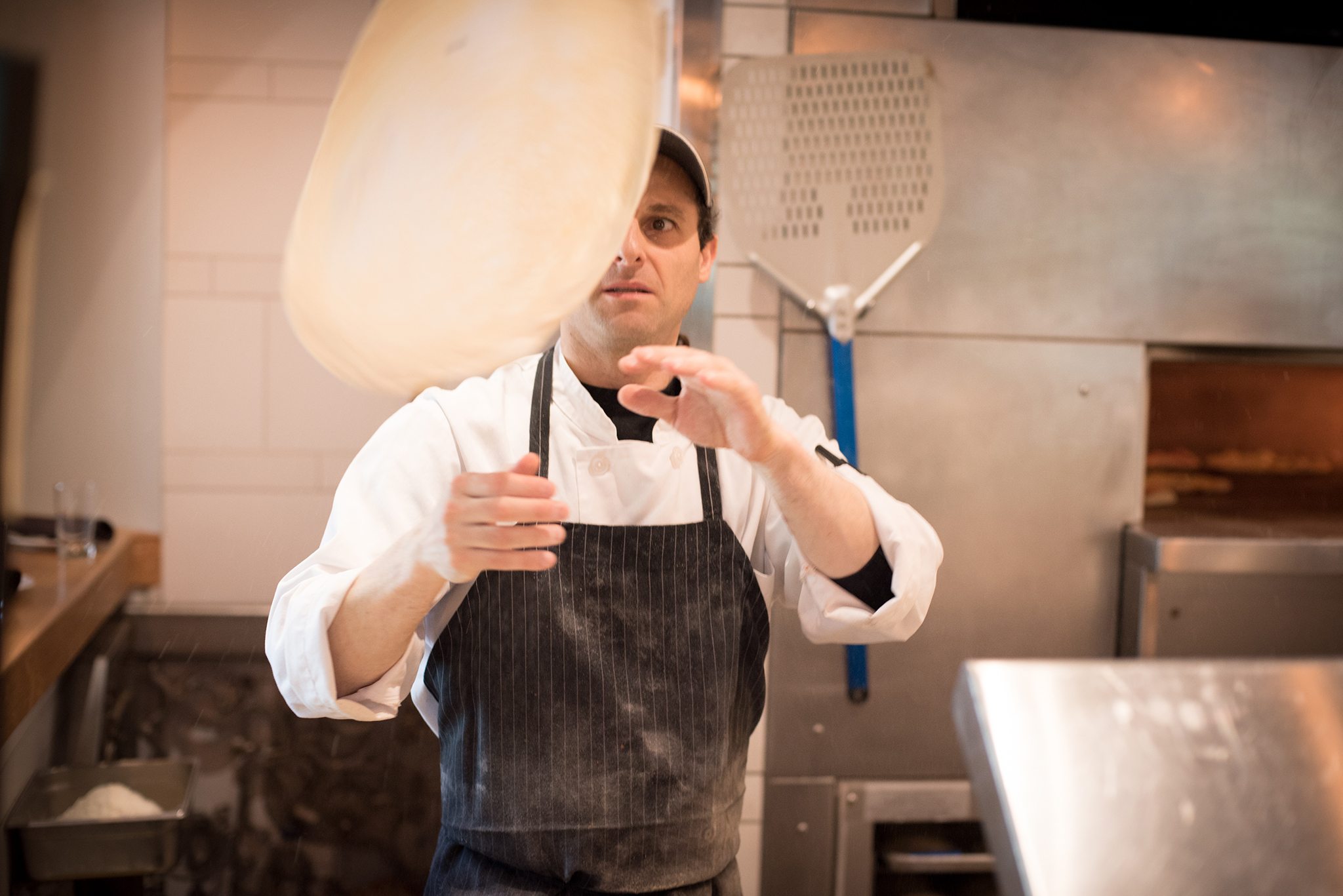
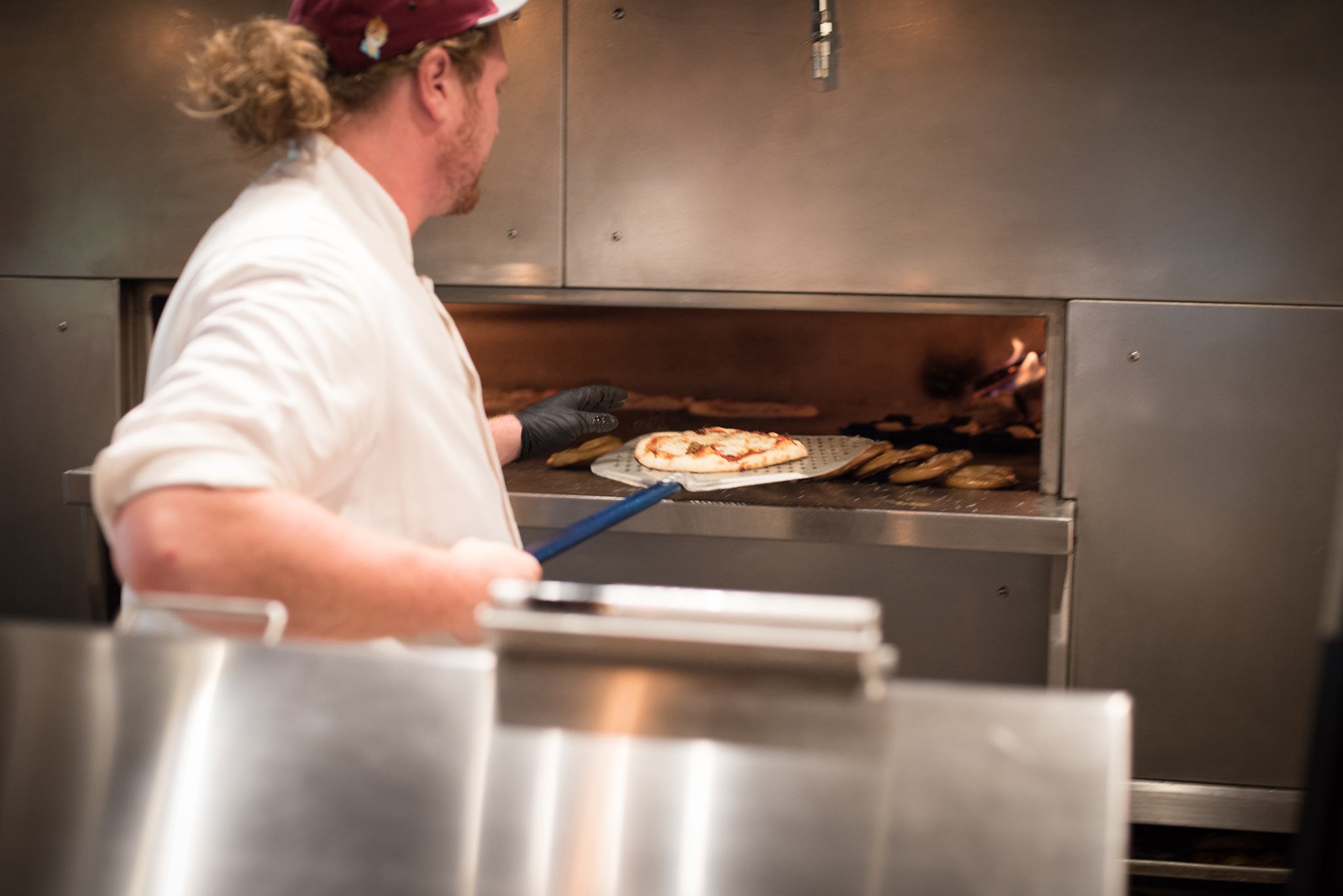
Jessie combines Estate mushrooms with those of other local farmers and foragers. Mike can’t possibly provide Taproom volumes.
“I’d have to have like 3,000 logs and it would be my full-time job,” he says.
Off the clock, Mike’s doing more mushroom foraging than backyard growing these days. On hikes he’s scanning the ground, looking for changes in color that will lead him to a harvest.
“I’ve even had it, too, where you can smell the mushroom before you ever see it,” he says.
At home, Mike cooks his mushrooms in butter and adds them to stir fry, scrambled eggs, burgers—anything really.
But Mike readily shifts from dinner plates to the planet, talking about researchers who are exploring whether mushrooms can help clean up oil spills. Or can they prevent erosion that harms waterways? These folks think fungi can save the world.
Maybe Mushroom Mike does, too.




